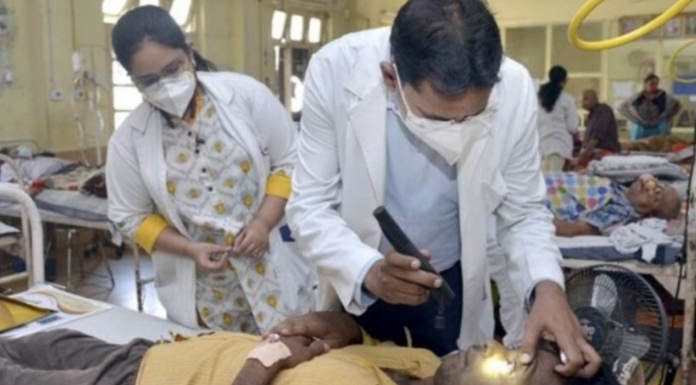NPR – It’s called the “black fungus,” and it can be deadly. It’s also adding to India’s growing COVID-19 woes at the moment.
On May 9, the Indian Council of Medical Research and India’s Health Ministry issued an advisory calling for better awareness, screening and management of mucormycosis, a rare but dangerous fungal infection.
In the weeks since then, Indian authorities have observed an unprecedented rise in cases. On May 22, a total of 8,848 cases had been recorded across India, with the states of Gujarat, Maharashtra and Andhra Pradesh accounting for more than half of the country’s infections.
India has now declared black fungus a notifiable disease, under its Epidemic Act.
Though it isn’t contagious, the government still wants to keep an eye on the rising numbers of cases, so this means that doctors are now required by law to report any fresh infections. So what exactly is it?
The symptoms of mucormycosis are mild at first and can often be missed in the initial stages.
Dr. Ronak Shukla, an ear, nose and throat doctor assigned to COVID-19 care at the government-run LG Hospital in Ahmedabad, treated a 35-year-old male patient who recently recovered from COVID-19 after being administered oxygen for a week in the intensive care unit.
Several days after recovering from COVID-19, the patient was back, complaining of an intense headache, pain in the sinus area and the right eye, blurred vision and swollen cheeks. An endoscopic examination revealed discoloration — a blackened area — around the nasal sinuses.
The disease progresses rapidly and “attacks blood vessels and live tissues,” Shukla says. “As it kills them, it turns them all black — and that’s where [the disease] gets the name ‘black fungus.’ ”
In just three days, it can spread to the eyes or the jawbone. In such cases, the only way to stop the spread to the brain is to remove the infected eye or jawbone surgically.
“Once it spreads to the brain, the fatality rate is over 50% … ” Click here to read more.



